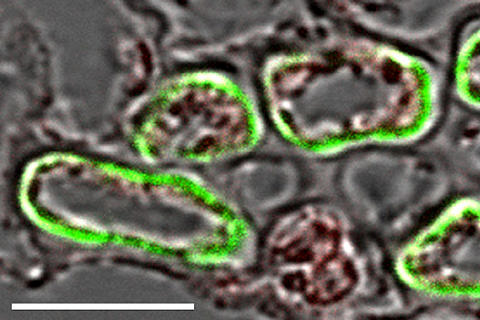From the cell into the veins

FAU researchers describe the protein that pumps sugar into the phloem of the sugar beet
Pressed into cubes, in the form of small crystals, in fizzy drinks, chocolate bars or in our coffee – we use sugar in vast quantities to sweeten drinks and foodstuffs. In Germany our sugar comes from sugar beet. Now researchers from the FAU, together with colleagues from other universities and from industry, have worked out how the sugar gets into the leaf veins, or phloem, of the sugar beet. Their work showed a specific protein to be responsible, which the researchers were able to localize at cell level and by doing so, describe its properties. They have published their results in the specialist journal Plant Biology.
Under the leadership of Prof. Dr. Norbert Sauer, Erlangen-based researchers from the chairs of Molecular Plant Physiology and Biochemistry at the FAU, in cooperation with colleagues from Würzburg, Cologne and Kaiserslautern, have described and localised a protein which loads the sugar produced by photosynthesis into the phloem. This protein goes by the name of BvSUT1 and is found in the plasma membranes of companion cells. These cells are only available in a specific plant class: the angiosperms or flowering plants. Together with the elongated sieve tube cells of these plants, they form a functional unit, with the companion cells being responsible for the metabolism and the sieve tube cells performing the sugar distribution. The researchers were able to localize the protein by treating cross-sections of leaf-veins with antibodies against the BvSUT1 protein. The antibodies only attacked the companion cells, but not the sieve tube cells.
The BvSUT1 protein pumps the sugar molecules, together with protons, through an inner pore from the space between the cells into the phloem of the beet leaves. Once inside the phloem, the sugar then flows into the root, where it is stored in special vacuoles, or spaces surrounded by a membrane. To be able to better measure the properties of the protein, the researchers introduced the genetic information for the BvSUT1 protein into yeast cells or into the ova of an African clawed frog. This meant that the scientists could determine things such as the type of sugar that is transported and also measure changes in loading at the plasma membrane when the BvSUT1 protein pumped the sugar molecules and the protons into the ova of the clawed frog. Sauer and his colleagues have described a phenomenon which, although previously known, had not been fully explained before. In future, this could result in the cultivation of higher-yielding types of beet.
The researchers published the results of the project, funded by the Federal Ministry of Education and Research, in the specialist journal Plant Biology under the title “Functional characterisation and cell specificity of BvSUT1, the transporter that loads sucrose into the phloem of sugar beet (Beta vulgaris L.) source leaves“ (doi:10.1111/plb.12546).
Further information
Prof. Dr. Norbert Sauer
Phone: +49 9131 8528211
norbert.sauer@fau.de